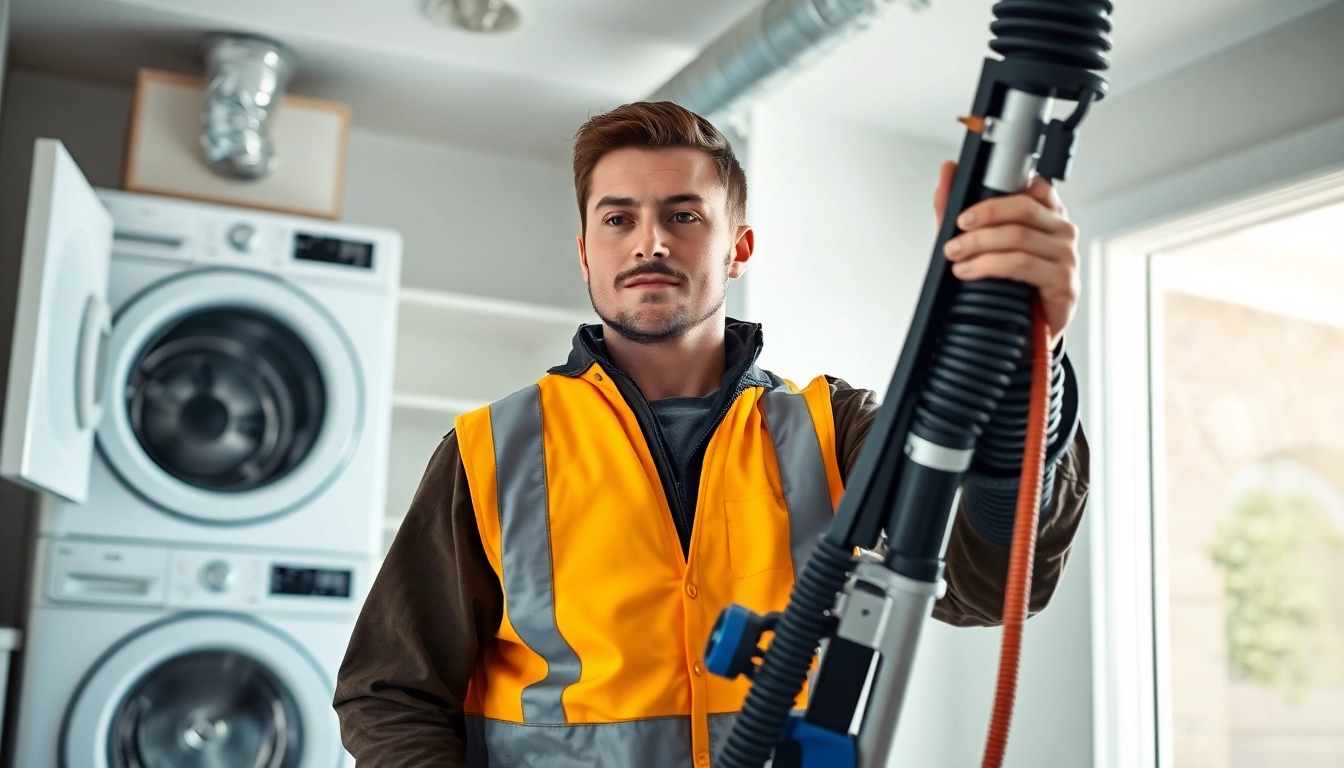Understanding Robot Vacuums
What is a Robot Vacuum?
A robot vacuum is an autonomous cleaning device designed to navigate your home and clean your floors with minimal human intervention. Primarily equipped with sensors, brushes, and batteries, these innovative machines can effectively manage dust and debris, making them an increasingly popular choice for busy homeowners. Unlike traditional vacuum cleaners, which require manual operation, robot vacuums utilize smart technology to chart a cleaning path, avoid obstacles, and return to their charging stations when the task is complete.
How Does a Robot Vacuum Work?
Robot vacuums function through a combination of advanced technologies and user-friendly features. They typically employ the following mechanisms:
- One or more sensors: These allow the robot to navigate around your home, detecting walls, furniture, and other obstacles.
- Mapping technology: Many robot vacuums utilize internal mapping software to create a digital layout of your home. This enables them to clean efficiently and avoid missed spots.
- Suction and brushes: Most robotic vacuums use a combination of suction power and brushes to capture dirt, pet hair, and allergens from various floor surfaces.
- Rechargeable battery: With an in-built battery, robot vacuums can clean independently and return to their docking station when low on power.
Key Advantages of Using a Robot Vacuum
Robot vacuums offer several benefits that contribute to their growing popularity, including:
- Time-saving: With a robot vacuum, you can schedule cleaning sessions, allowing you to focus on other important tasks while the machine handles the floors.
- Consistent Cleaning: These devices can clean more frequently than traditional vacuums, leading to a more consistently maintained home.
- Effective Allergy Management: Many models come equipped with advanced filtration systems that help trap allergens, improving air quality.
- Smart Home Integration: Many robot vacuums are compatible with smart home systems, allowing you to control them via your smartphone or voice commands.
Top Features to Consider
Suction Power and Cleaning Performance
When choosing a robot vacuum, it’s crucial to evaluate its suction power and overall cleaning performance. A vacuum’s suction ability is measured in pascals (Pa), and higher figures generally indicate stronger performance. For example, some advanced models can offer a suction power of over 2000 Pa, effectively lifting dirt and pet hair from carpets and hard floors alike. Additionally, it’s worth considering the vacuum’s cleaning modes—many modern units can handle various floor types, adjusting settings for optimal performance across hardwood, tile, and carpet.
Battery Life and Charging Options
The battery life of robot vacuums varies significantly across models. It’s essential to select a vacuum that can clean your home in one charge. Most units provide around 60-120 minutes of cleaning time per charge. Additionally, look for models that feature “self-charging” ability, enabling them to return to their charging dock automatically when their battery is low or when the cleaning cycle is complete.
Navigation Technology and Smart Features
Navigation technology plays a pivotal role in how a robot vacuum performs. Entry-grade models might use simple bump-and-go systems, while advanced models employ laser-guided systems (LIDAR) or cameras for precise navigation. Smart features can include the ability to set virtual boundaries, schedule cleaning jobs, and receive alerts and updates via a smartphone app. Additionally, some models can integrate with smart home systems, such as Amazon Alexa or Google Assistant, enabling voice command functionality.
Comparing Different Robot Vacuum Models
Budget-Friendly Options
If you are looking for effective cleaning without breaking the bank, there are several budget-friendly options available. Many brands offer affordable models ranging between $150 to $300, catering to basic cleaning tasks. While these vacuums may lack advanced features such as smart mapping or app control, they still provide sufficient suction power and scheduled cleaning capabilities for everyday dust and debris management.
High-End Models with Advanced Features
For those willing to invest more, high-end robot vacuums can range from $400 to over $1000. These units typically offer superior suction power, sophisticated navigation technology, self-emptying capabilities, and advanced filtration systems. Brands such as iRobot and Roborock set industry standards with their upgraded features, making them desirable options for deep cleaning.
Best Robot Vacuums for Pet Owners
For pet owners, finding a robot vacuum capable of handling pet hair and dander is crucial. Certain models are specifically designed with pet owners in mind, featuring powerful suction, tangle-free brush rolls, and specialized filters to capture allergens. Look for vacuums that provide pet-specific modes and can navigate around pet toys and furniture, ensuring your home remains clean and comfortable.
Maintaining Your Robot Vacuum
Regular Cleaning and Maintenance Tips
To keep your robot vacuum running efficiently, regular maintenance is required. Here are several essential tips:
- Empty the dustbin regularly to prevent clogs and maintain suction power.
- Clean the brushes and wheels to ensure mobility and effective dirt collection.
- Wipe down the sensors with a soft cloth to maintain navigation accuracy.
Troubleshooting Common Issues
Robot vacuums may encounter issues from time to time. Common problems include poor navigation, lack of suction, or operational interruptions. If your vacuum gets stuck, adjusting floor mats and removing obstacles can help. In cases of decreased suction, check the dustbin and filters for clogs. Always refer to the manufacturer’s troubleshooting guide for specific suggestions.
When to Replace Your Robot Vacuum
Understanding when to replace your robot vacuum is essential for effective cleaning. If your vacuum is more than five years old, experiencing frequent failures, or cannot hold a charge, it may be time to consider upgrading to a more advanced model. Checking for a lack of features compared to newer models can also guide your decision.
Maximizing Efficiency with Your Robot Vacuum
Setting Cleaning Schedules
One of the key advantages of a robot vacuum is the ability to set cleaning schedules. Most models allow you to customize cleaning routines based on your lifestyle. For instance, if you are home during the day, scheduling cleaning sessions when you are away ensures uninterrupted performance. Additionally, programming them to perform cleaning tasks after significant events—such as gatherings or pet playdates—adds to their practicality.
Optimizing Your Home for Robot Cleaning
To enhance your robot vacuum’s performance, optimizing your home environment is beneficial. This can include:
- Clearing pathways of obstacles like shoes or pet toys to facilitate better navigation.
- Limiting textural variations in carpets and rugs that may confuse lower-end models.
- Creating no-go zones in the app for areas with delicate furniture or thick cords.
Combining Robot Vacuums with Other Cleaning Tools
Your robot vacuum is an excellent addition to your cleaning toolkit, but it’s essential to remember it doesn’t replace traditional cleaning methods entirely. Using a manual vacuum for deeper cleans, high places, or tough messes enables you to maintain overall cleanliness. Effective combinations might include robotic mops for tile surfaces or handheld vacuums for less accessible areas.
In conclusion, investing in a robot vacuum can significantly improve your home’s cleanliness and provide valuable time savings. By understanding the fundamentals, exploring various models, and engaging in regular maintenance, you ensure that your investment continues to serve you well for years to come.












Leave a Reply